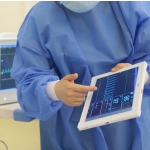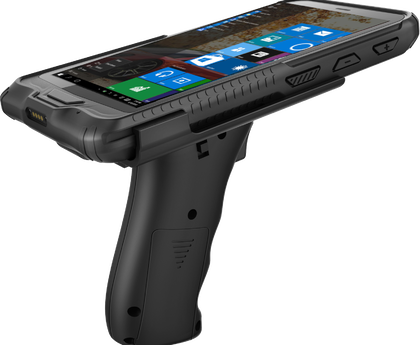In the world of touch-enabled devices, two primary types of touch screens dominate the market: capacitive and resistive. Understanding the differences between these technologies can empower you to make the right choice when selecting a PDA or tablet. Let’s delve into the unique features and characteristics of each.
Capacitive Touch Screens:
Capacitive touch screens are the more modern and widely used technology in today’s smartphones, tablets, and other handheld devices. Here are the key features:
- Touch Sensing Mechanism:
- Utilizes the electrical properties of the human body.
- Reacts to the touch of a finger or a stylus with a conductive tip.
- Multi-Touch Support:
- Capable of recognizing multiple points of contact simultaneously.
- Enables gestures like pinch-to-zoom and swiping.
- Clarity and Sensitivity:
- Offers better clarity as there are no additional layers on top of the display.
- Highly sensitive to touch, providing a smooth and responsive experience.
- Durability:
- Generally more durable than resistive screens due to fewer moving parts.
- Resistant to wear and tear over time.
Resistive Touch Screens:
Resistive touch screens were more prevalent in the past and are still used in specific applications. Here are the key features:
- Touch Sensing Mechanism:
- Comprises multiple layers, including a flexible top layer and a rigid bottom layer separated by insulating dots.
- Activated when pressure is applied, causing the layers to make contact.
- Single-Touch Input:
- Primarily supports single-touch input.
- Limited to basic touch functionalities without multi-touch capabilities.
- Precision:
- Can be less precise compared to capacitive screens.
- Requires more deliberate and firm touches.
- Versatility:
- Suitable for stylus input and resistive to a variety of pointing devices.
- Often used in industrial settings or applications where precision is more critical than multi-touch capability.
Choosing the Right Touch Screen for You:
“Which Touch Screen Technology is Glove-Friendly?”
Resistive touch screens are generally more suitable for operation with gloves. Since they rely on pressure to register a touch, they can respond to the pressure exerted by gloved fingers or styluses. This makes resistive touch screens more versatile in environments where users may need to wear gloves, such as industrial settings, medical facilities, or outdoor activities in cold weather.
On the other hand, capacitive touch screens, which use the electrical conductivity of the human body, may not respond well to touches from gloved hands unless the gloves are specifically designed with capacitive touch sensitivity in mind.
Therefore, if your target audience includes users who may frequently wear gloves while using the devices, you might want to consider offering devices with resistive touch screens or providing information about the compatibility of certain gloves with capacitive touch screens.
If you prioritize:
- Responsiveness and Multi-Touch Capability: Opt for a device with a capacitive touch screen.
- Precision and Stylus Input: Consider a device with a resistive touch screen.
Understanding the differences between capacitive and resistive touch screens will guide you in selecting a device that aligns with your preferences and usage requirements. Whether you’re looking for a sleek tablet for multimedia or a robust PDA for specific industrial applications, knowing the technology behind the touch screen is a crucial step in making an informed decision.
Feel free to explore our range of PDAs and tablets to find the perfect device for your needs!






